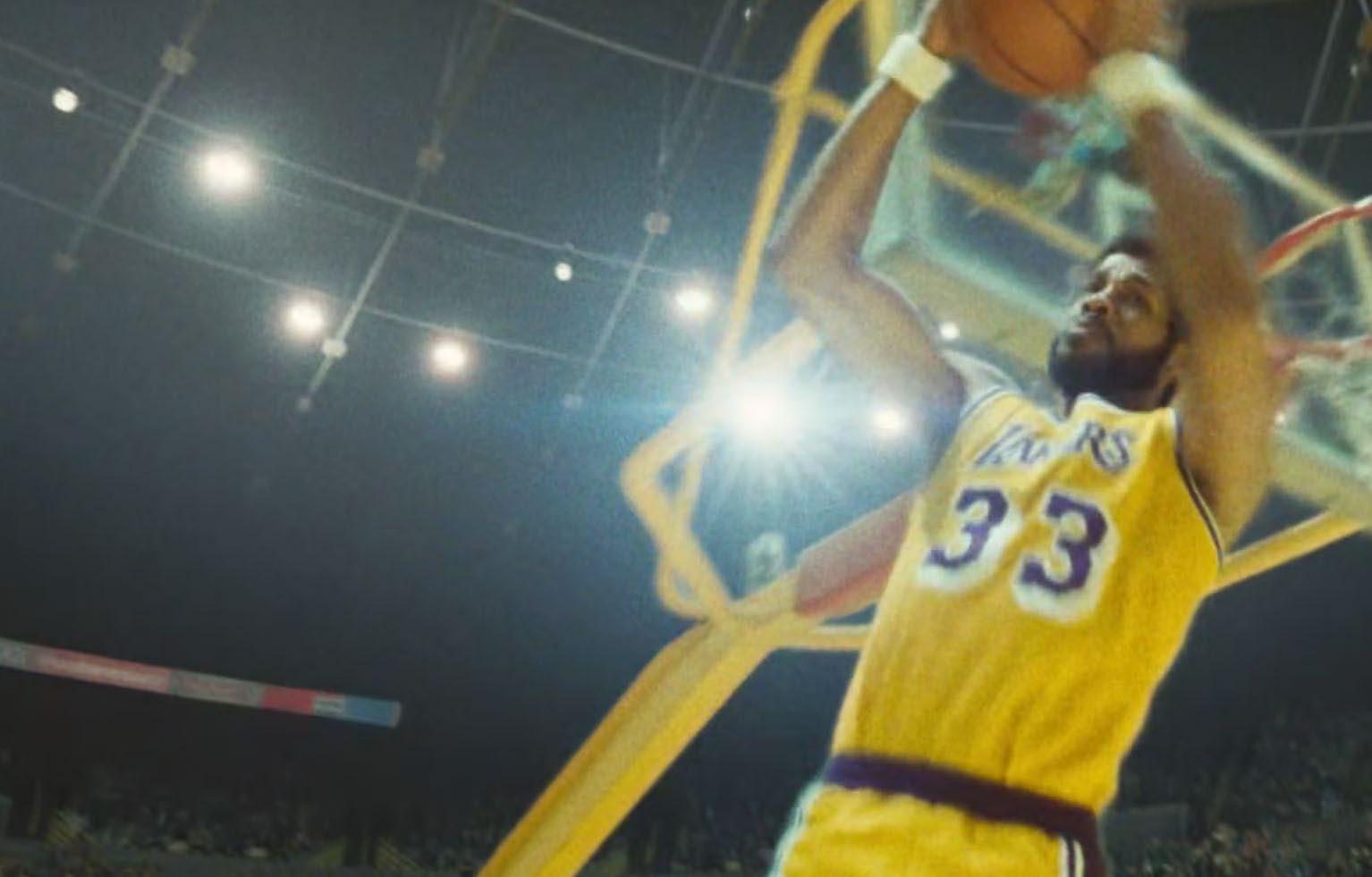
4 minute read
Creating a slam dunk with visual effects
PRODUCTION AND POST CREATING A SLAM DUNK WITHVISUAL
EFFECTS
Winning Time: The Rise of the Lakers Dynasty follows the rise of the Los Angeles Lakers basketball team during the early 1980s as the likes of Magic Johnson and Kareem Abdul-Jabbar became stars of the sport. The series’ producers worked with visual effects studio Pixomondo to recreate the atmosphere of the team’s matches. Senior VFX supervisor Michael Shelton talks to TVBEurope about Pixomondo’s work on the show
TALK US THROUGH PIXOMONDO’S ROLE ON WINNING TIME Pixomondo was responsible for creating all the crowds and basketball arena interiors for each of the five locations in season one.
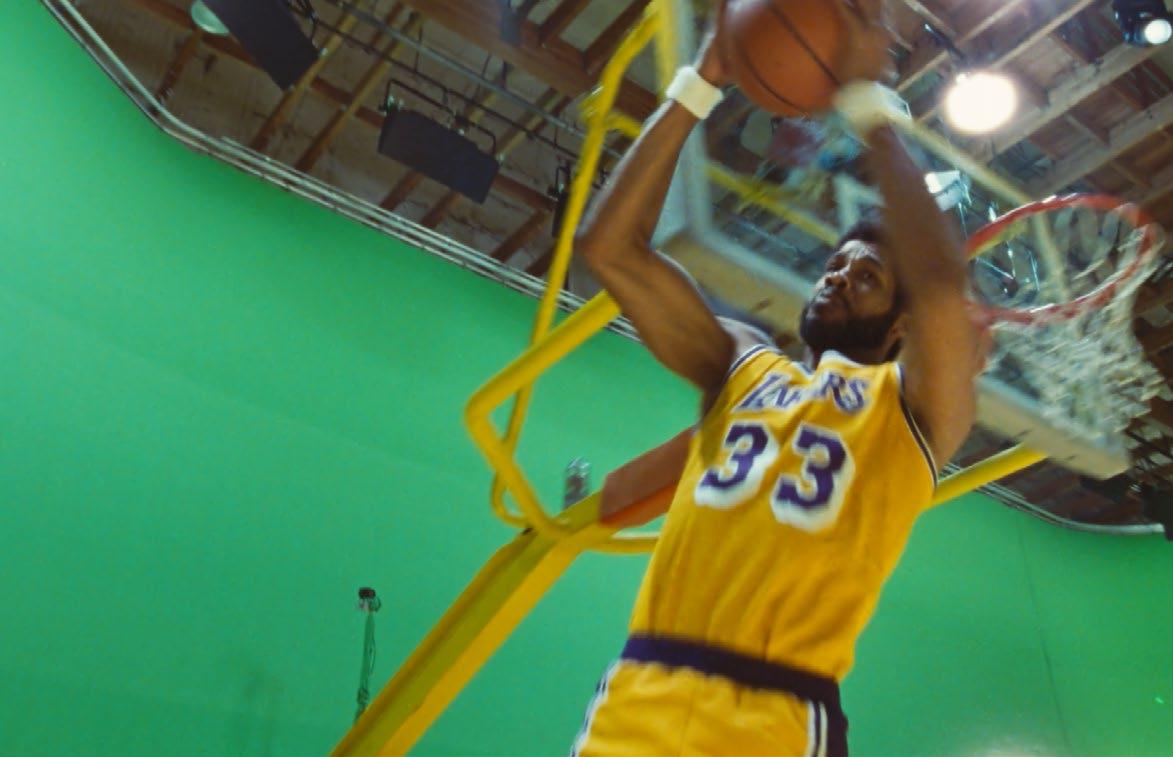
WHAT ARE THE CHALLENGES IN SHOOTING A BASKETBALL GAME ON A GREEN SCREEN? Like anything involving precise choreography, it required planning and months of rehearsals to capture the action in the way the filmmakers envisioned. We knew going into the project it would be challenging to extract the basketball action cleanly but fortunately we have a great deal of experience handling challenging projects.
WAS THE GREEN SCREEN BIGGER THAN ONES YOU’VE USED ON PREVIOUS PROJECTS? The screen itself was hung around the entire stage to ensure complete coverage in all areas except the ceiling, which was not feasible due to the lighting grid above. If it wasn’t the largest I’ve used, it was close to it.

HOW DID THE ACTORS/ATHLETES FIND WORKING AGAINST GREEN SCREEN? I think the green screen in this instance wasn’t a distraction to the actors. A good amount of time was spent practising and planning and the focus was on the gameplay.
Solomon Hughes plays Kareem Abdul-Jabbar, the Lakers centre. Depicted here and above grabbing a rebound at The Forum
WERE SPECIALIST CAMERAS USED TO SHOOT THE ACTION? The cameras were a mixture of film bodies shooting 35,16 and 8mm film. There was also an Ikegami broadcast camera circa 1980s that was used that we had to pull keys on the footage. It definitely required all the tricks we had to get the extractions clean enough to composite. There were custom rigs for shooting, mostly used so the camera operator could be in the midst of the action on the court. This lent itself to the dynamic action that ended up on screen, there were times they strapped the rig onto an operator who rollerbladed around the actors and got beautiful shots.
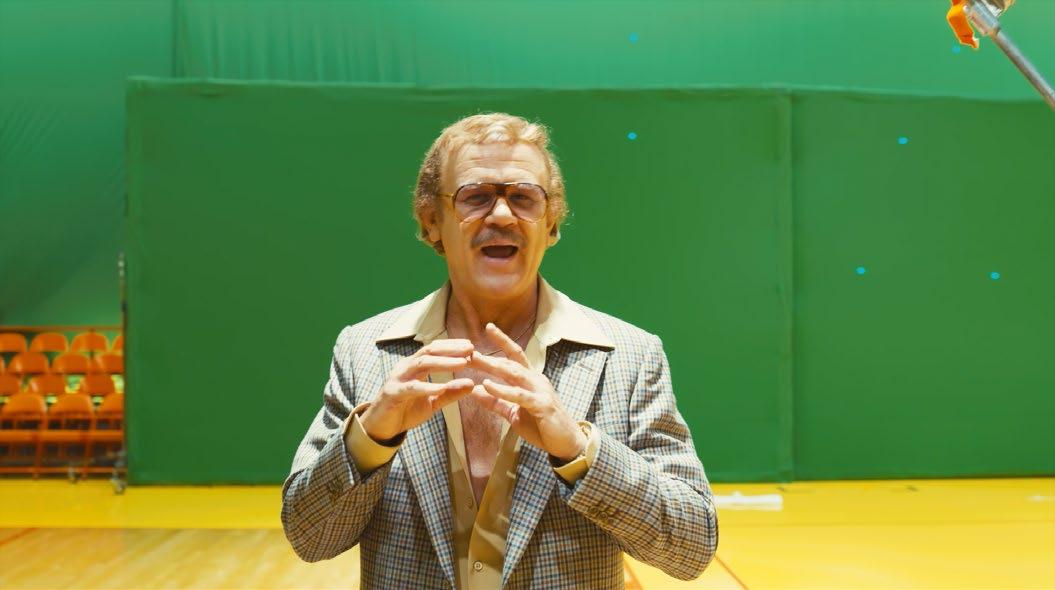
John C Reilly plays the charismatic owner and initial architect of the Laker’s 1980’s dynasty, Dr Jerry Buss
Kareem Abdul-Jabbar launching his famous sky hook against the San Diego Clippers defenders
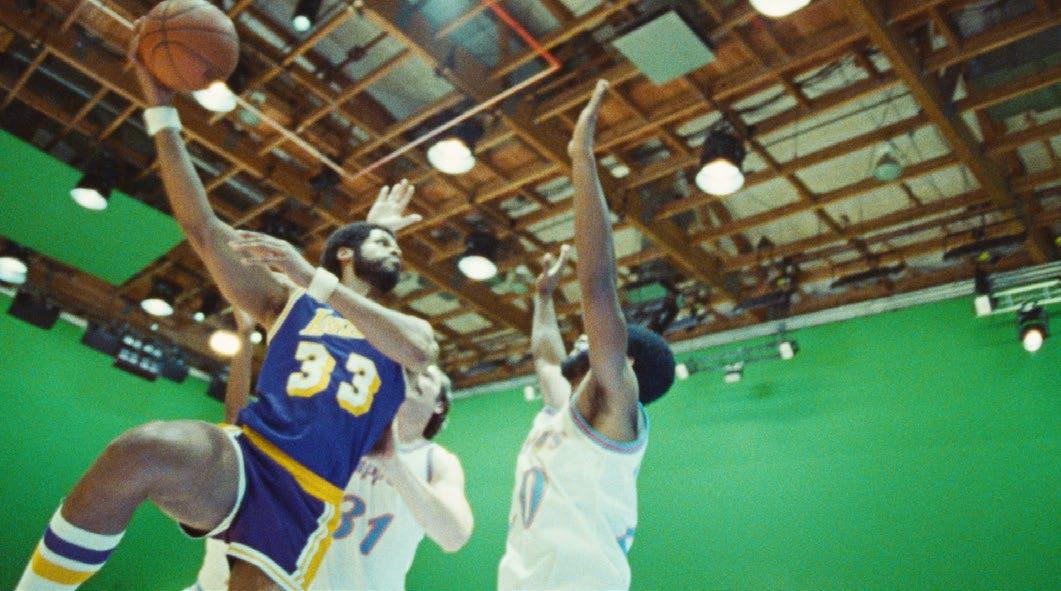
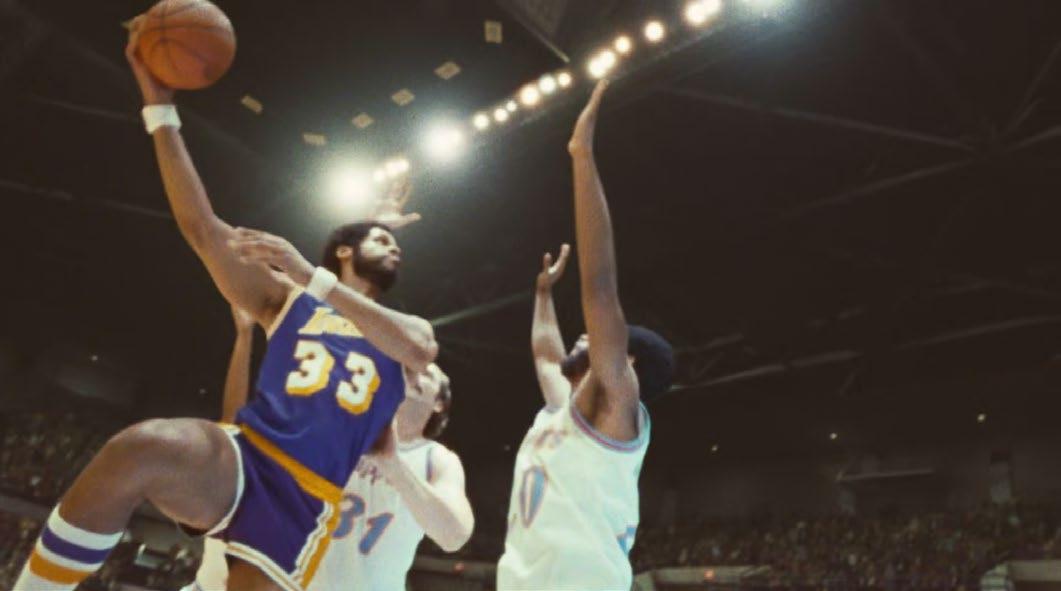
HOW MANY CAMERAS WERE ON SET? Up to four cameras shooting a mix of film formats.
WHAT DID POST PRODUCTION VFX ENTAIL? Pixomondo’s work entailed extracting the basketball action from the green screen footage and placing it inside our fully computer-generated interiors. We then added crowds to fill in each arena, matching their action to respond to the game play on the court and any crowds that were present in the footage.
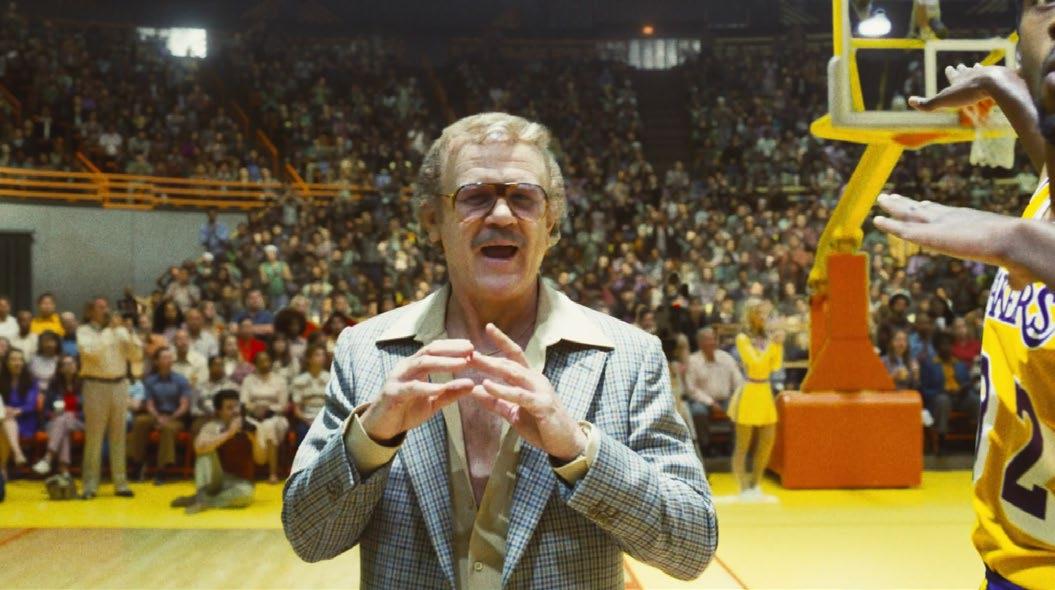
THE DIRECTORS WANTED THE SHOW TO LOOK LIKE IT WAS FILMED IN THE 1980S. HOW DID THAT IMPACT YOUR WORK WHEN USING 21ST CENTURY TECHNOLOGY? DID YOU HAVE TO RECREATE SPECIFIC ARENAS AND THE WAY THEY LOOKED DURING THE ‘80S? We created The Forum, San Diego Sports Arena, Boston Garden and Philadelphia Spectrum. We researched and worked with the production team to make sure that advertisements and DeVaughn Nixon as Laker’s point guard signage was correct for the time as well as Norm Nixon runs past a Boston player on the location. The production supervisor, his way to score John Heller, had done quite a bit of research as well which helped us stay consistent.
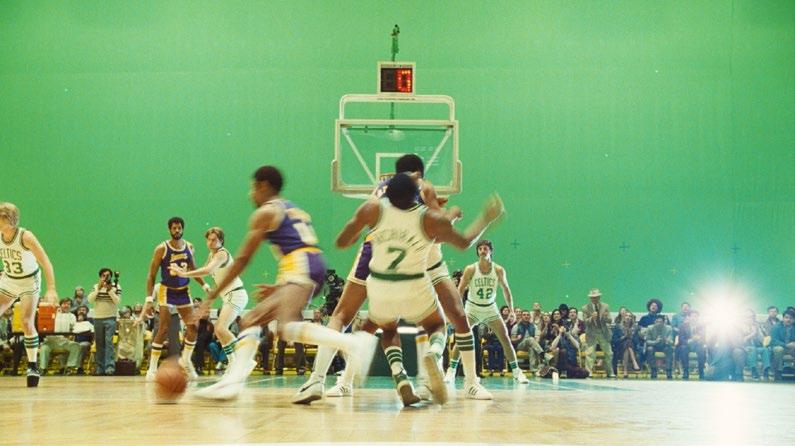
Not as much as you might expect, mostly because they shot on film and on digital cameras that already had the look they were after so it didn’t need to be created artificially. We have tools to deal with film grain and challenging lighting conditions which are present regardless of how advanced the camera capturing the image is.
DID THE TEAM DO ANY RESEARCH INTO THE TIME PERIOD THAT THE SHOW IS SET? We did quite a bit in tandem with the extensive research the production team provided. We spent time watching old TV broadcasts from the time as well as photography of games from that period. This was important in order to match the feel of the lighting in each stadium, how much atmosphere, the type of lights used, etc.
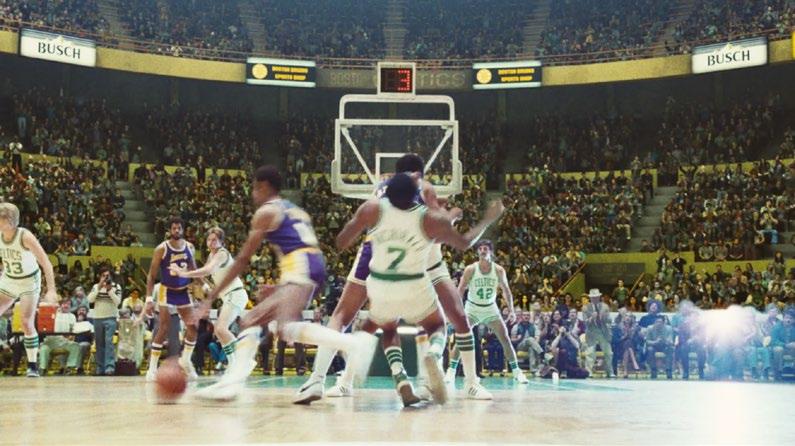
HOW BIG A PROJECT WAS IT FOR PIXOMONDO? (HOW MANY PEOPLE WERE INVOLVED, AND FOR HOW LONG?) Pixomondo delivered over 600 shots that involved crowds and arena interiors as well as additional shots that were not basketball specific. It was a project that involved Pixomondo’s global network that included Los Angeles, Vancouver, Toronto, Montreal and our studios in Germany. We were involved in pre-production through final delivery which was a little over a year. n







